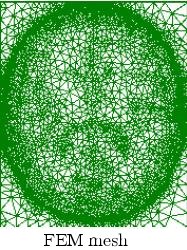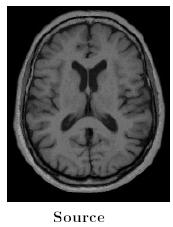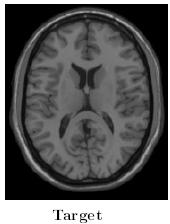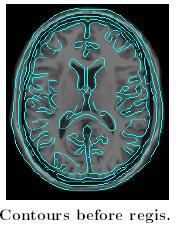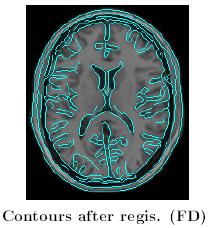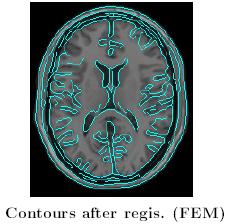Non-rigid regsitration using FEM |
| Karteek Popuri, Dana Cobzas, Martin Jagersand |
ReferencesPopuri K., Cobzas D. and Jagersand M. A variational formulation for discrete registration International Conference on Medical Image Computing and Computer Assisted Intervention (MICCAI) 2013 Popuri, K., Cobzas D. and Jagersand, M. Fast FEM-based non-rigid registration Canadian Conference on Computer and Robot Vision (CRV) 2010 Application to muscle and fat segmentation in CT imagesPopuri K., Cobzas D., Esfandiari N., Baracos B., Jägersand M. Body Composition Assessment in Axial CT Images using FEM-based Automatic Segment ation of Skeletal Muscle , Transaction of Medical Imaging ,2015 Popuri K., Cobzas D. and Jagersand M. A Fem Deformable Mesh for Active Region Segmentation, IEEE International Symposium on Biomedical Imaging (ISBI) 2013 Popuri K., Cobzas D., Jagersand M., Esfandiari N. and Baracos V. FEM-Based Automatic Segmentation of Muscle and Fat Tissues from Thoracic CT Images IEEE International Symposium on Biomedical Imaging (ISBI) 2013 |
DescriptionTraditionally, finite differences are used to implement registration algorithms due to their ease of implementation. However, finite differences are sensitive to noise, and they have a narrow numerical stability range. Further, finite differences employ a uniform grid. This is often not desirable in the case of registration, as finer resolution is needed to capture the displacement field in regions that have a high number of image features, as opposed to homogeneous regions with fewer features. On the other hand, the less explored Finite Element Methods are ideal for the non-rigid registration task, as they use a non-uniform discretization of the image domain, placing points based on the local image feature information. First (CRV 2010), we proposed a FEM-based implementation of a popular diffusion-based non-linear registration algorithm. Experimentally, we show that our implementation is much faster than the corresponding finite difference implementation, and that it achieves this computational speed without compromising the accuracy of the non-rigid registration results. Secondly (MICCAI 2013), we designed a variational formulation based on finite elements for a discrete formulation of a registration method. This is based on our previously published random walker method (MICCAI 2011).
|
